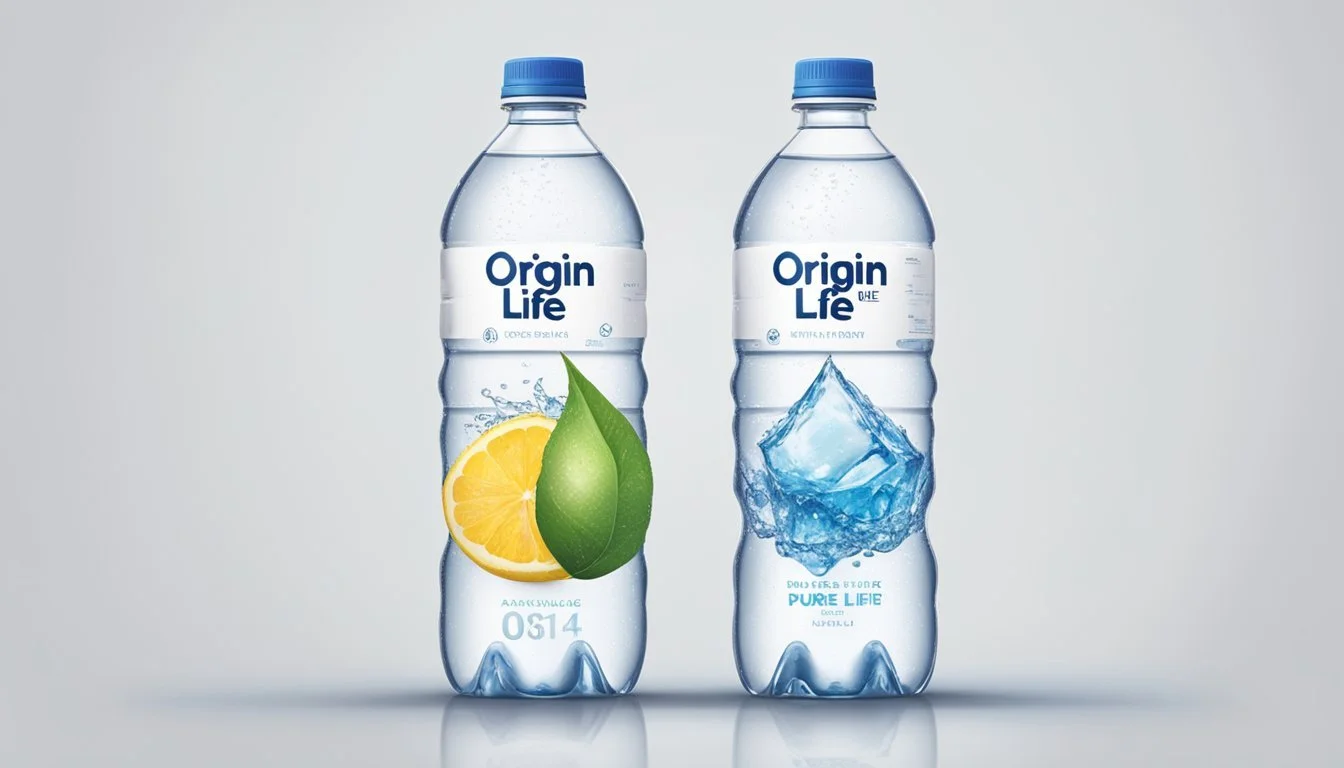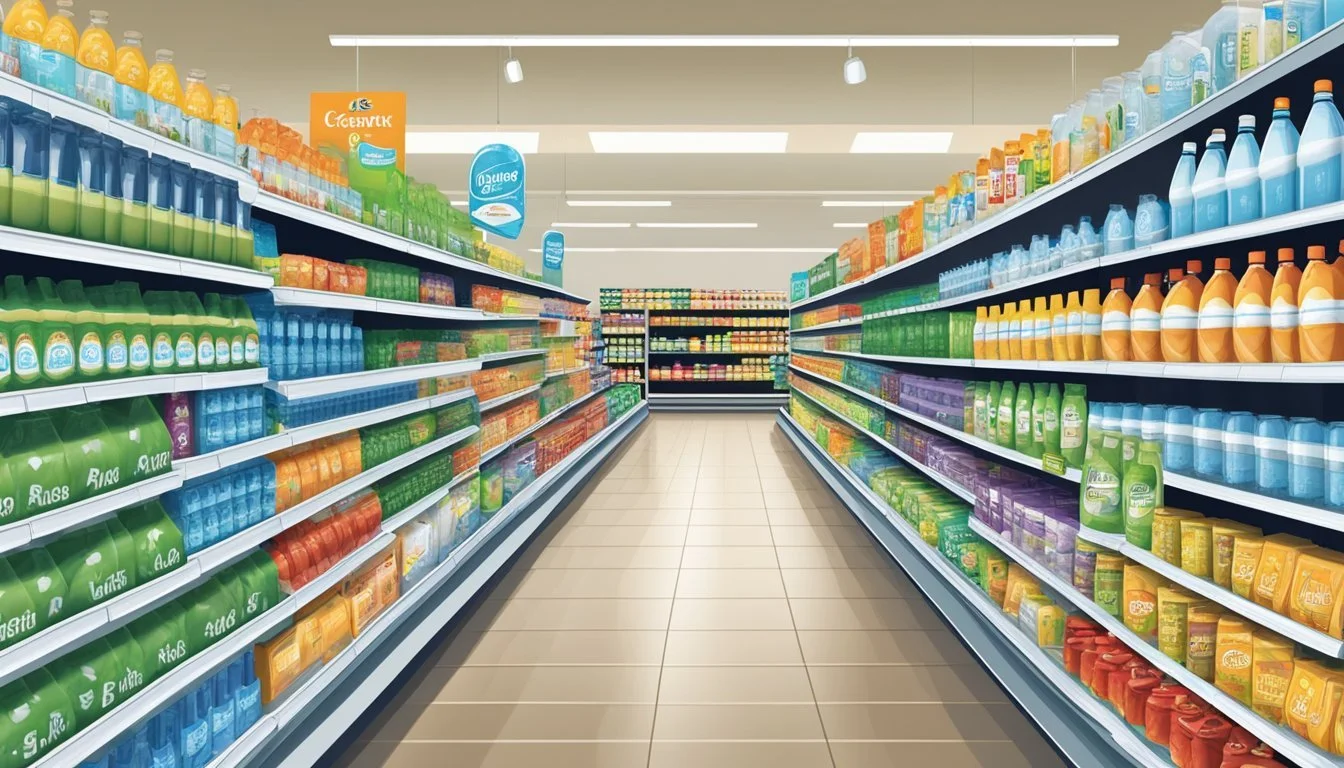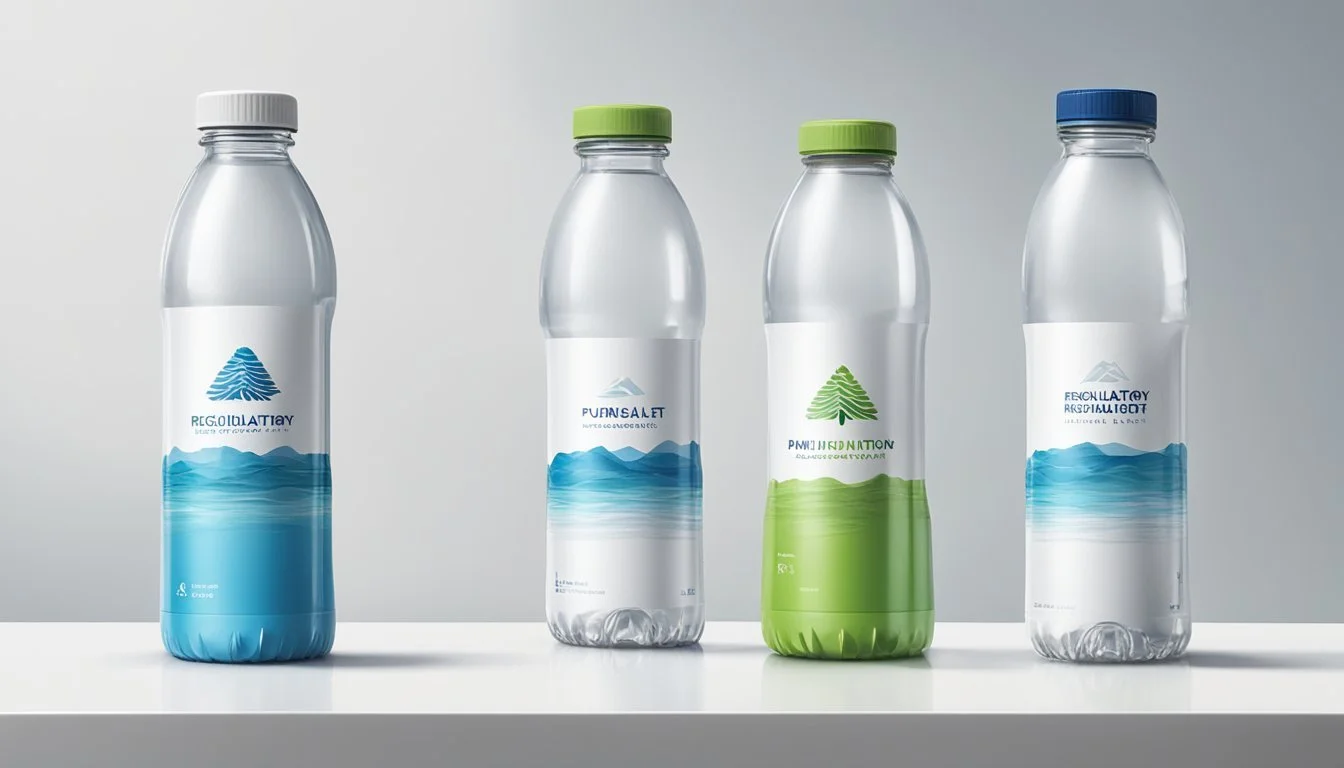Origin vs. Pure Life
A Comparative Bottled Water Study
When choosing between Origin and Nestlé Pure Life bottled water, it's important to consider factors such as source, taste, and price. Both brands offer unique qualities that cater to different preferences.
Origin water is often praised for its natural sourcing and minimal processing, which can appeal to consumers looking for more authentic and environmentally-friendly options. On the other hand, Nestlé Pure Life is known for its rigorous purification process, ensuring consistent taste and quality across all its products.
For consumers who prioritize natural sourcing, Origin is the better choice, while those who value consistent quality may prefer Nestlé Pure Life. This post will explore these aspects in depth to help you make an informed decision.
Assessing Water Quality
When choosing between Origin and Pure Life bottled water brands, it is crucial to look at various factors that determine water quality, such as pH levels, mineral content, filtration processes, and contaminants.
Understanding pH Levels and Acidity
pH levels indicate the acidity or alkalinity of water. This can impact taste and interact with minerals. A neutral pH is 7, while below 7 is acidic, and above 7 is alkaline. Pure Life generally maintains a neutral to slightly alkaline pH, which can be more palate-friendly and less harsh on the stomach.
Origin water, sourced from natural springs, often has a naturally balanced pH level suitable for consumption. Monitoring and maintaining pH levels ensure the water's taste remains consistent and can also impact its interaction with other substances in the body.
Mineral Content Significance
The mineral content in water contributes significantly to its taste and health benefits. Minerals such as calcium, magnesium, and potassium are essential for bodily functions. Origin bottles its water from springs, retaining naturally occurring minerals, which are often preferred for their health benefits and enhanced taste profile.
Pure Life, being a purified bottled water, might lack some natural minerals due to its extensive filtration. However, some brands add minerals back into the water to improve taste and provide essential nutrients.
Evaluating Filtration Processes
Filtration processes are key to ensuring the water's purity and quality. Pure Life uses advanced filtration methods such as reverse osmosis, ozonation, and the Hydro-7 process. These techniques remove contaminants, bacteria, and impurities, ensuring a high level of purity and consistent taste.
Origin water undergoes minimal treatment to preserve its natural state. Typically, spring waters are subject to filtration to remove particulate matter but retain beneficial minerals. The lighter filtration approach helps maintain the water’s natural qualities while ensuring safety.
Contaminants and Purity
Ensuring the absence of contaminants like heavy metals, pharmaceuticals, and industrial pollutants is vital. Pure Life water undergoes rigorous testing to ensure it is free from harmful contaminants such as lead and fluoride, making it a safe choice for daily consumption.
Origin water, while naturally sourced, is also subjected to tests to guarantee its purity. Source integrity is essential, and any presence of contaminants like heavy metals or microbial content is addressed before bottling. Consuming water free from contaminants is critical for health and well-being.
Exploring Types of Bottled Water
Different types of bottled water offer unique benefits based on their sources, purification processes, and added components. This section delves into various categories to help you make an informed decision.
Purified vs. Spring Water
Purified water undergoes a rigorous cleaning process involving distillation, deionization, or reverse osmosis. Brands like Nestlé Pure Life often use purified water, ensuring consistent quality by removing impurities and contaminants.
In contrast, spring water is collected from natural springs and is typically filtered to remove debris. This type of water retains natural minerals and flavors. For instance, Poland Spring offers 100% natural spring water sourced from aquifers, often providing a fresher taste.
The Role of Electrolytes
Electrolytes such as sodium, potassium, and magnesium play a crucial role in maintaining hydration and supporting bodily functions. Some bottled waters, like Smartwater, include added electrolytes for taste and hydration benefits.
Natural spring waters often have naturally occurring electrolytes picked up as water travels through geological formations. However, purified waters might lack these minerals unless they are reintroduced during the purification process, which some brands do to enhance taste.
Alkaline Water Explained
Alkaline water has a pH level above 7, which can help neutralize acid in the body. It is marketed for its potential health benefits, such as improved hydration and antioxidative properties. Brands like Essentia offer alkaline water by adding essential minerals like calcium, potassium, and magnesium.
The alkalinity typically comes from the water passing over mineral-rich rocks or from artificial ionization. This process increases the water's pH, offering a distinct taste that some consumers prefer.
Significance of Source Origin
The origin of the water source can significantly influence its taste and mineral content. Natural spring water brands often highlight their pristine sources, such as Fiji Water, which comes from an aquifer in Fiji and is filtered through volcanic rock.
Evian, sourced from the French Alps, emphasizes the purity and mineral balance of its water, gathered from unpolluted sources. In contrast, purified waters focus on the consistency and safety achieved through their filtration processes, regardless of initial water quality.
Health Considerations in Bottled Water
When choosing bottled water, health factors such as hydration levels, mineral content, and bottle safety should be taken into account.
Hydration and Athletic Performance
Proper hydration is crucial, particularly for athletes. Different bottled waters vary in their sodium content, which can impact fluid balance. Nestlé Pure Life offers purified water aimed at general hydration needs. It undergoes a multi-step filtration process to eliminate contaminants.
In contrast, Ozarka sources its water from natural springs, providing essential electrolytes like magnesium and calcium. These minerals can help athletes recover by replenishing lost nutrients during physical activity. Drinking water with natural electrolytes can help maintain optimal hydration levels.
Daily Health and Mineral Intake
Daily intake of essential minerals is important for maintaining good health. Bottled waters can be a source of minerals like magnesium and calcium. Ozarka's natural spring water contains a rich mineral composition reflective of Texas's geological characteristics. This offers a potential health benefit for those seeking to increase their mineral intake through water consumption.
Nestlé Pure Life, while purified for safety, may lack the mineral content found in spring water. For those looking specifically for a mineral boost, checking labels for magnesium and calcium content is recommended.
Understanding BPA Impact
BPA (Bisphenol A) is a chemical used in producing certain plastics, which has raised health concerns. Studies suggest exposure to BPA can lead to various health issues. Luckily, many bottled water brands, including Nestlé Pure Life, now use BPA-free bottles, reducing these risks.
Consumers are encouraged to verify if the bottled water they are choosing is labeled as BPA-free. Ozarka also provides options in BPA-free packaging, ensuring safer consumption. Avoiding BPA is particularly critical for vulnerable populations, such as pregnant women and children.
When selecting bottled water, considering BPA and opting for BPA-free options is a prudent health measure.
Sustainability and Environmental Impact
Production and consumption of bottled water raise multiple concerns over environmental sustainability. This section examines how Origin and Nestlé Pure Life manage their bottling processes, their water sourcing practices, and the carbon footprint of the industry.
Bottling Processes and Eco-Friendliness
Both Origin and Nestlé Pure Life use plastic bottles, contributing to plastic waste. Nestlé Waters, which produces Pure Life, has faced criticism for its reliance on single-use plastics.
The bottling process itself consumes significant energy. Nestlé Waters has made strides in using recycled plastics (rPET) to mitigate this impact. Origin, in contrast, focuses on minimalistic packaging and increasing the recyclability of its products.
Despite these efforts, the industry still battles pollution and waste management issues, urging companies towards more eco-friendly practices.
Sourcing and Water Rights
Nestlé Waters sources its products from multiple locations, often tapping into natural springs. This has led to community and environmental concerns about water rights and the sustainability of these practices. Over-extraction can deplete local water sources, adversely affecting ecosystems.
Origin, on the other hand, emphasizes sustainable sourcing. It ensures that each water source it taps is regularly monitored to prevent over-extraction. This commitment to sustainability helps avoid detrimental impacts on local water supplies and ensures long-term viability.
The Industry's Carbon Footprint
The carbon footprint of the bottled water industry is substantial. Transportation and production stages contribute significantly to greenhouse gas emissions. Nestlé Waters has implemented measures to reduce this footprint, such as optimizing logistics and using low-emission technologies.
Origin focuses on local distribution networks, reducing transportation-related emissions. By sourcing and selling water locally, it minimizes the environmental impact associated with long-distance shipping. Though both brands have made efforts to reduce their carbon footprints, significant challenges remain in achieving truly sustainable practices in the industry.
Consumer Choices and Convenience
Consumers often prioritize factors such as taste, convenience, and accessibility when choosing between Origin and Pure Life bottled waters.
Taste Preferences and Brand Loyalty
Taste plays a significant role in consumer preference. Nestlé Pure Life boasts an extensive distillation process that aims to deliver a clean, crisp taste. Origin, another reputed brand, markets its water as sourced from pristine locations, promising a naturally refreshing flavor.
Brand loyalty also influences choices. Consumers tend to stick with a brand—like Coca-Cola's Dasani or PepsiCo's Aquafina—that matches their taste preference, reinforcing consistent purchasing habits.
Packaging and Portability
Packaging and portability are essential for modern consumers. Pure Life offers various sizes, from single-serve bottles to larger multipacks, catering to different needs. This makes it convenient for on-the-go hydration or stocking up at home.
Origin often emphasizes environmentally-friendly packaging. Innovations such as recyclable and biodegradable materials make it a preferred choice for environmentally conscious consumers. Portable packaging allows for easy carrying, especially for active lifestyles.
Access to Safe Drinking Water
Access to safe drinking water remains a priority. Bottled water from reliable brands like Origin and Pure Life provides a safe alternative to potentially contaminated tap water.
Both companies adhere to stringent quality controls to ensure their products meet safety standards. Arsenic levels and other contaminants must be below permissible limits, ensuring consumer safety.
Reliability on these brands can be crucial, especially in regions where tap water is not always safe to drink—guaranteeing trust and peace of mind for consumers.
Regulatory Oversight and Quality Assurance
Both Origin and Nestlé Pure Life bottled water brands are subject to rigorous regulatory standards to ensure safety and quality. This includes compliance with both national and international regulations, as well as industry-specific guidelines.
EPA and FDA Standards
In the United States, bottled water is regulated by the Food and Drug Administration (FDA). The FDA's standards are often as stringent, if not more so, than the Environmental Protection Agency's (EPA) standards for tap water. The FDA requires bottled water to comply with the Federal Food, Drug, and Cosmetic Act as well as specific parts of Title 21 of the Code of Federal Regulations.
Nestlé Pure Life and Origin must adhere to these regulations, ensuring contaminants are kept below the maximum allowable limits. The FDA also mandates specific labeling requirements, ensuring transparency about the source and quality of the water.
Another critical aspect involves continuous monitoring and regular quality checks. Both brands must maintain detailed records and conduct periodic testing to certify that their water meets federal safety and quality standards.
International Regulations and Compliance
Globally, bottled water industry standards can vary, but international guidelines aim to ensure consumer safety and product quality. These include the World Health Organization's (WHO) Guidelines for Drinking-water Quality, which serve as a reference for countries establishing regulations for bottled water.
Nestlé Pure Life, being a global brand, must comply with these international standards, along with any regional regulations specific to markets where it is sold. This includes adhering to purification processes, quality control measures, and accurate labeling.
Origin, if distributed internationally, also must meet these guidelines to ensure it is safe for consumption regardless of where it is purchased. Compliance with international regulations helps build consumer trust and assures a high level of quality across different markets.
More About Origin
Mountain Valley Spring Water vs Origin: Which Bottled Water is Better?
Origin vs Kirkland Signature: Which Bottled Water is Better?
Origin vs Richard's Rainwater: Which Bottled Water is Better?
Origin vs Whole Foods Italian Still Mineral water: Which Bottled Water is Better?
More About Pure Life
Cascade Mountain vs Pure Life: Which Bottled Water is Better?
Hawaii Volcanic vs Pure Life: Which Bottled Water is Better?
Hawaiian Springs vs Pure Life: Which Bottled Water is Better?
Icelandic Glacial vs Pure Life: Which Bottled Water is Better?
Nestle Pure Life vs Pure Life: Which Bottled Water is Better?
Pure Life vs Kirkland Signature: Which Bottled Water is Better?
Pure Life vs Whole Foods 365: Which Bottled Water is Better?
Richard's Rainwater vs Pure Life: Which Bottled Water is Better?
Solan de Cabras vs Pure Life: Which Bottled Water is Better?
Talking Rain AQA vs Pure Life: Which Bottled Water is Better?
Whole Foods Italian Still Mineral water vs Pure Life: Which Bottled Water is Better?




